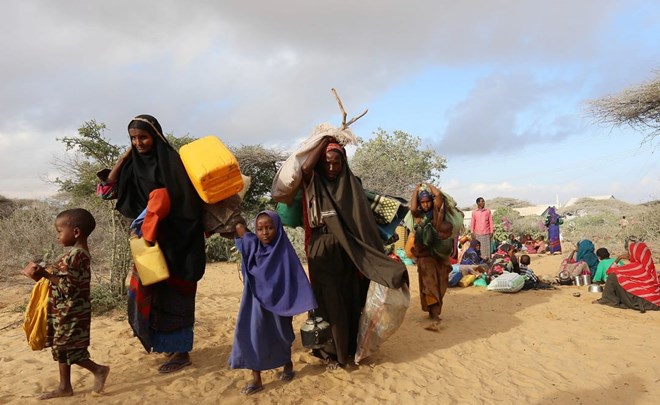Humanitarian organizations made an united request for $39.5 million on Friday to increase humanitarian aid in Eastern Africa as the worst drought in 40 years approaches.
The funds will enable the International Federation of Red Cross and Red Crescent (IFRC), Kenya Red Cross, Ethiopia Red Cross, and Somali Red Crescent to assist 1.56 million people by scaling up emergency and recovery activities and addressing the root causes of food insecurity, according to the IFRC, Kenya Red Cross, Ethiopia Red Cross, and Somali Red Crescent.
Following a three-day visit to Kenya, IFRC Secretary-General Jagan Chapagain urged for a major increase in humanitarian and long-term aid to communities affected by the escalating hunger crisis in the Horn of Africa.
“The situation is rapidly deteriorating. We need immediate humanitarian assistance to reach the most vulnerable. We also need long-term solutions that address the impact of climate change including investment in resilient livelihoods,” Chapagain said in a statement issued in Nairobi, the capital of Kenya.
According to him, Kenya, Ethiopia, and Somalia are in the midst of a large-scale, climate-related, and long-term humanitarian disaster, with over 14 million people food insecure and in desperate need of assistance, including at least 5.5 million children suffering from acute malnutrition.
According to the International Fund for Relief and Development (IFRC), 6.1 million Ethiopians and 4.1 million Somalis require immediate humanitarian aid.
According to the report, 3.5 million Kenyans are food insecure, with the dry and semi-arid territories of eastern and northern Kenya undergoing severe drought.
According to Chapagain, the Ukraine conflict has largely masked and amplified this silent calamity.”It isn’t just food and water that people need here. In the background, there are unseen issues such as sexual and gender-based violence, and the profound impacts on mental health. An example given was of women walking over 40 km to reach potable water – what happens on the journey is unthinkable,” he said.
Speaking at the end of a visit to northern Kenya’s Marsabit, one of the country’s areas that has been hardest hit by the effects of drought, Chapagain said he saw firsthand the level of suffering caused by drought in Marsabit.
Asha Mohammed, secretary-general of the Kenya Red Cross Society, who was also in Marsabit, said the fact that people in Marsabit have lost over 70 percent of their livestock, which is their main source of livelihood, means that it will be a long and slow path to recovery.
“Our teams are playing a central role in reducing the risks that families are facing. They have provided cash assistance, food assistance and improved water treatment practices, but the need to rehabilitate water systems remains urgent. We call all our partners and stakeholders to support our efforts,” Mohammed said.

